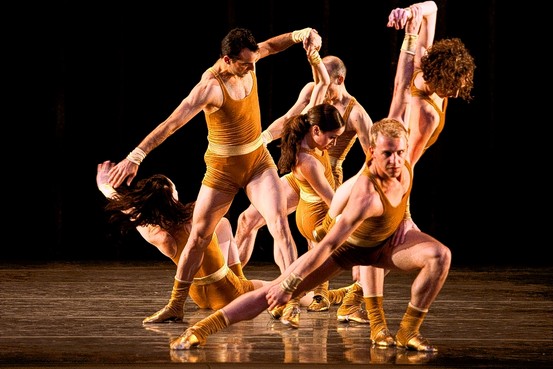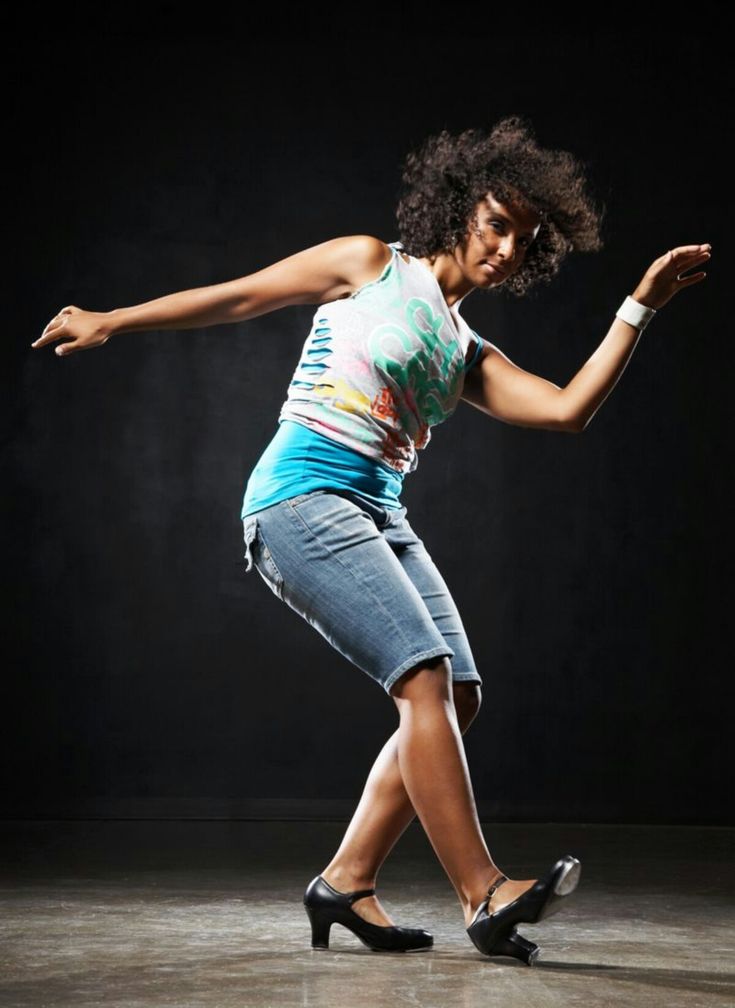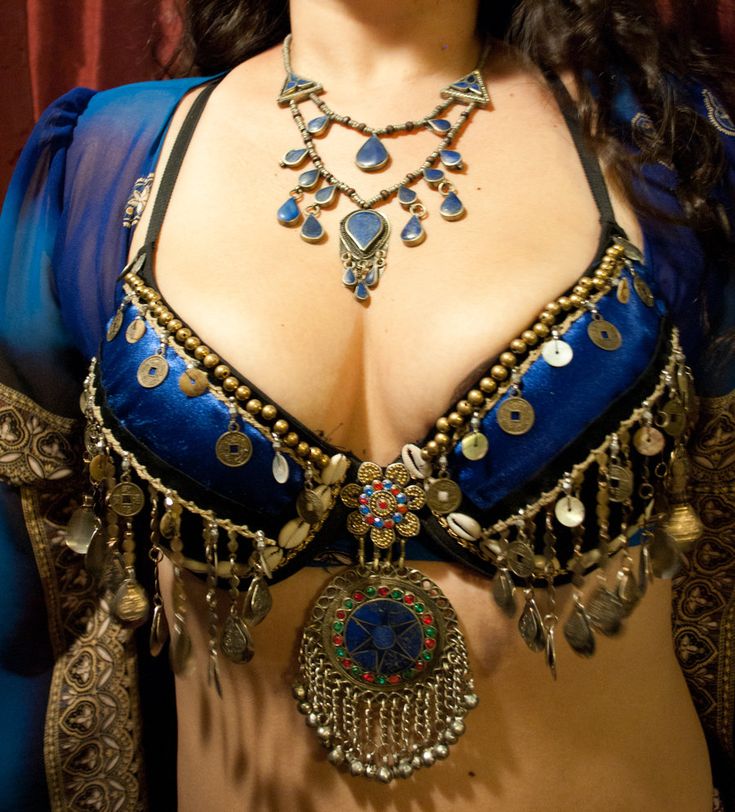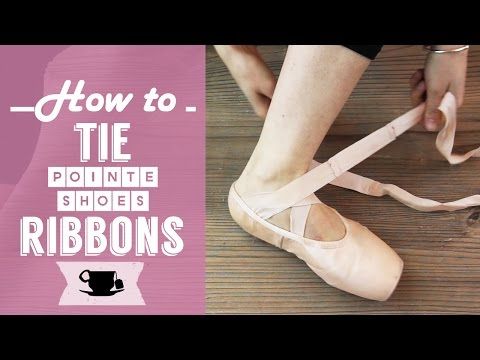How to dance zorba the greek
404 - PAGE NOT FOUND
Why am I seeing this page?
404 means the file is not found. If you have already uploaded the file then the name may be misspelled or it is in a different folder.
Other Possible CausesYou may get a 404 error for images because you have Hot Link Protection turned on and the domain is not on the list of authorized domains.
If you go to your temporary url (http://ip/~username/) and get this error, there maybe a problem with the rule set stored in an .htaccess file. You can try renaming that file to .htaccess-backup and refreshing the site to see if that resolves the issue.
It is also possible that you have inadvertently deleted your document root or the your account may need to be recreated. Either way, please contact your web host immediately.
Are you using WordPress? See the Section on 404 errors after clicking a link in WordPress.
How to find the correct spelling and folder
Missing or Broken FilesWhen you get a 404 error be sure to check the URL that you are attempting to use in your browser. This tells the server what resource it should attempt to request.
http://example.com/example/Example/help.html
In this example the file must be in public_html/example/Example/
Notice that the CaSe is important in this example. On platforms that enforce case-sensitivity example and Example are not the same locations.
For addon domains, the file must be in public_html/addondomain.com/example/Example/ and the names are case-sensitive.
Broken ImageWhen you have a missing image on your site you may see a box on your page with with a red X where the image is missing. Right click on the X and choose Properties. The properties will tell you the path and file name that cannot be found.
This varies by browser, if you do not see a box on your page with a red X try right clicking on the page, then select View Page Info, and goto the Media Tab.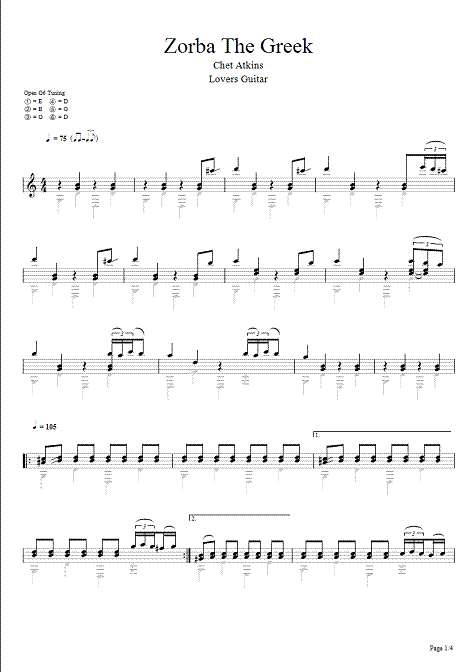
http://example.com/cgi-sys/images/banner.PNG
In this example the image file must be in public_html/cgi-sys/images/
Notice that the CaSe is important in this example. On platforms that enforce case-sensitivity PNG and png are not the same locations.
404 Errors After Clicking WordPress Links
When working with WordPress, 404 Page Not Found errors can often occur when a new theme has been activated or when the rewrite rules in the .htaccess file have been altered.
When you encounter a 404 error in WordPress, you have two options for correcting it.
Option 1: Correct the Permalinks- Log in to WordPress.
- From the left-hand navigation menu in WordPress, click Settings > Permalinks (Note the current setting. If you are using a custom structure, copy or save the custom structure somewhere.)
- Select Default.
 index.php$ - [L]
index.php$ - [L]
RewriteCond %{REQUEST_FILENAME} !-f
RewriteCond %{REQUEST_FILENAME} !-d
RewriteRule . /index.php [L]
</IfModule>
# End WordPressIf your blog is showing the wrong domain name in links, redirecting to another site, or is missing images and style, these are all usually related to the same problem: you have the wrong domain name configured in your WordPress blog.
How to modify your .htaccess file
The .htaccess file contains directives (instructions) that tell the server how to behave in certain scenarios and directly affect how your website functions.
Redirects and rewriting URLs are two very common directives found in a .htaccess file, and many scripts such as WordPress, Drupal, Joomla and Magento add directives to the .htaccess so those scripts can function.
It is possible that you may need to edit the .htaccess file at some point, for various reasons.This section covers how to edit the file in cPanel, but not what may need to be changed.
There are Many Ways to Edit a .htaccess File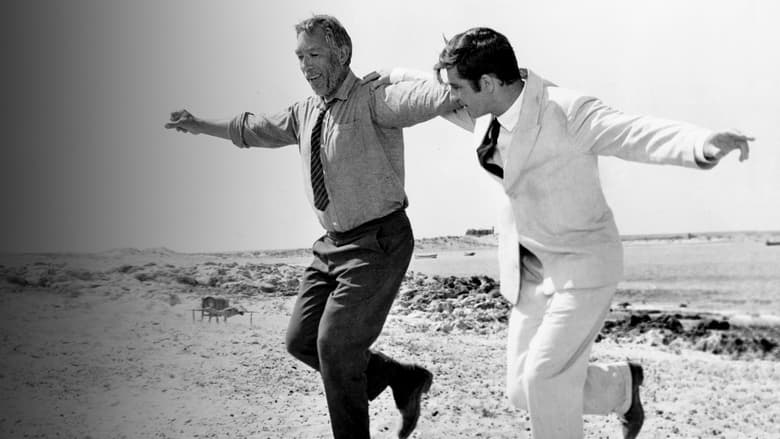 (You may need to consult other articles and resources for that information.)
(You may need to consult other articles and resources for that information.)- Edit the file on your computer and upload it to the server via FTP
- Use an FTP program's Edit Mode
- Use SSH and a text editor
- Use the File Manager in cPanel
The easiest way to edit a .htaccess file for most people is through the File Manager in cPanel.
How to Edit .htaccess files in cPanel's File ManagerBefore you do anything, it is suggested that you backup your website so that you can revert back to a previous version if something goes wrong.
Open the File Manager- Log into cPanel.
- In the Files section, click on the File Manager icon.
- Check the box for Document Root for and select the domain name you wish to access from the drop-down menu.
- Make sure Show Hidden Files (dotfiles)" is checked.

- Click Go. The File Manager will open in a new tab or window.
- Look for the .htaccess file in the list of files. You may need to scroll to find it.
- Right click on the .htaccess file and click Code Edit from the menu. Alternatively, you can click on the icon for the .htaccess file and then click on the Code Editor icon at the top of the page.
- A dialogue box may appear asking you about encoding. Just click Edit to continue. The editor will open in a new window.
- Edit the file as needed.
- Click Save Changes in the upper right hand corner when done. The changes will be saved.
- Test your website to make sure your changes were successfully saved. If not, correct the error or revert back to the previous version until your site works again.
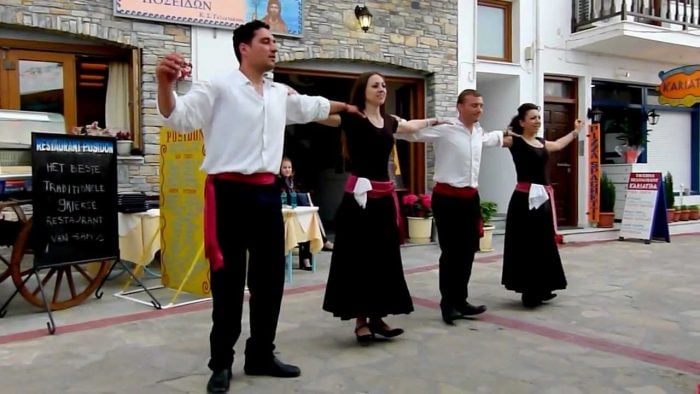
- Once complete, you can click Close to close the File Manager window.
Syrtaki (2*), Zorba’s dance – seuGreek – Folkdance Footnotes
*2nd Generation dance. A dance that developed and was disseminated in a non-traditional way. 2G dances are specific – have a fixed format designed to correspond with the arrangement of a particular recording., whereas 1G dances are generic – have a shorter sequence that works with live music – where many different songs are played and arrangements vary according to the tastes of musicians and dancers. For more on the differences between 1st & 2nd G dances click here.
Syrtaki is a media invention. When Anthony Quinn taught Alan Bates to dance in Zorba the Greek, he was performing a combination Vari Hasapiko and fast Hasapiko, choreographed by Giorgios Provias, to match the musical score written by Mikis Theodorakis.
 Starting slow and building up to a frenetic climax, it was a triumphant way to end a movie. Quinn had learned a more difficult dance, but sprained his ankle before shooting, so the final product is hardly a Greek dance at all.
Starting slow and building up to a frenetic climax, it was a triumphant way to end a movie. Quinn had learned a more difficult dance, but sprained his ankle before shooting, so the final product is hardly a Greek dance at all.When non-Greeks saw it, they thought it was a real Greek dance and soon tourists were demanding to be taught ‘Zorba’s Dance’. Since no such dance existed, everyone was free to do anything vaguely Greek that started slow and ended fast. Google ‘Zorba’ and ‘dance’ and look at the variations.
Someone started calling the dance Syrtaki, which means “little syrto” – a catchy name, even though the dance has nothing to do with a traditional Greek Syrto. It did however give the impression that Syrtaki was a real Greek dance, not just something from a movie.

If you want to dance a Syrtaki there are many printed dance notes you can learn. A better use of energy would be to learn Vari Hasapiko, Hassaposerviko, and fast Hasapiko. Then, instead of trying to perform someone else’s choreography, do what Zorba would do and dance as the spirit moves you!
Start slow, doing variations on Vari Hasapiko, including the basic step if you can. Sometimes the music gradually increases to a tempo suitable for Hassaposerviko. Sometimes it jumps abruptly to fast Hasapiko speed. Sometimes it even slows and speeds several times. Have fun with it. More than any other dance, with Syrtaki there is no right way or wrong way.
Like this:
Like Loading...
How "Sirtaki" appeared - Website about Crete
Subscribe to our Telegram channel
Interesting about Crete
- Material Information
- Views: 41170
The progenitors of the national Greek dance "Sirtaki" were the Cretan dances "Syrtos" and "Pidichthos". And few people know the amazing story of the origin of the Sirtaki dance. In fact, Sirtaki appeared not so long ago, at 1964 on the set of the film "Zorba the Greek" (Zorba The Greek, based on the novel by famous writer Nikos Kazantzakis). And there was a dance, I must say, very spontaneously.
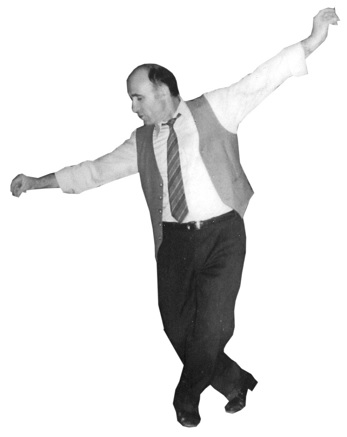
According to the script of the film, its main character, played by Antony Quinn, was supposed to show the national Greek dance to Basis. The beach scene was supposed to be quite short, about two minutes. Therefore, director Michael Kakoyanis faced a difficult task, to find a musician who would write music for this scene, so much so that in two minutes he could convey all the energy of Greek dance and make him believe that this is really a national dance. Kakoyanis entrusted such a difficult task to the Greek composer Mikis Theodorakis. And he handled it brilliantly. The dance itself, which, by the way, was called the Zorba Dance, was invented by Anthony Quinn. And to make it as similar to Greek as possible, Anthony Quinn personally trained the dance technique with the local population. And since the film was shot entirely on the island of Crete, Quinn learned to dance the most popular national Cretan dances - Sirtos and Pidichtos.
The dance invented by Anthony Quinn was literally glued together from Sirtos at the beginning of the dance and Pidichthos in the second (fast) part of the dance.
 From here appeared, which became insanely popular, the accelerating rhythm of the national Greek dance. But, if we compare Cretan dances and Sirtaki, it is clearly seen that they are not quite similar, Cretan dances are energetic, with a lot of jumps and various steps performed by the dancers, which, in fact, is not in Sirtaki. And all this despite the fact that Quinn quite well mastered the technique of local dances and the original version of the dance he invented was very similar to the dynamic Cretan dances, although it was pure improvisation. The fact is that before shooting the scene on the beach, Anthony Quinn broke his leg, and the crew was in danger of being left without this scene at all. But Quinn convinced director Michael Cacoyanis that he could do the "Zorba Dance" even with complicated leg swings. Naturally, the complex elements in the dance were never realized, but the dance turned out to be original and attractive in its own way. After filming the scene, Anthony Quinn revealed that his leg was so sore that it was impossible to lift it off the ground, let alone jump or swing.
From here appeared, which became insanely popular, the accelerating rhythm of the national Greek dance. But, if we compare Cretan dances and Sirtaki, it is clearly seen that they are not quite similar, Cretan dances are energetic, with a lot of jumps and various steps performed by the dancers, which, in fact, is not in Sirtaki. And all this despite the fact that Quinn quite well mastered the technique of local dances and the original version of the dance he invented was very similar to the dynamic Cretan dances, although it was pure improvisation. The fact is that before shooting the scene on the beach, Anthony Quinn broke his leg, and the crew was in danger of being left without this scene at all. But Quinn convinced director Michael Cacoyanis that he could do the "Zorba Dance" even with complicated leg swings. Naturally, the complex elements in the dance were never realized, but the dance turned out to be original and attractive in its own way. After filming the scene, Anthony Quinn revealed that his leg was so sore that it was impossible to lift it off the ground, let alone jump or swing.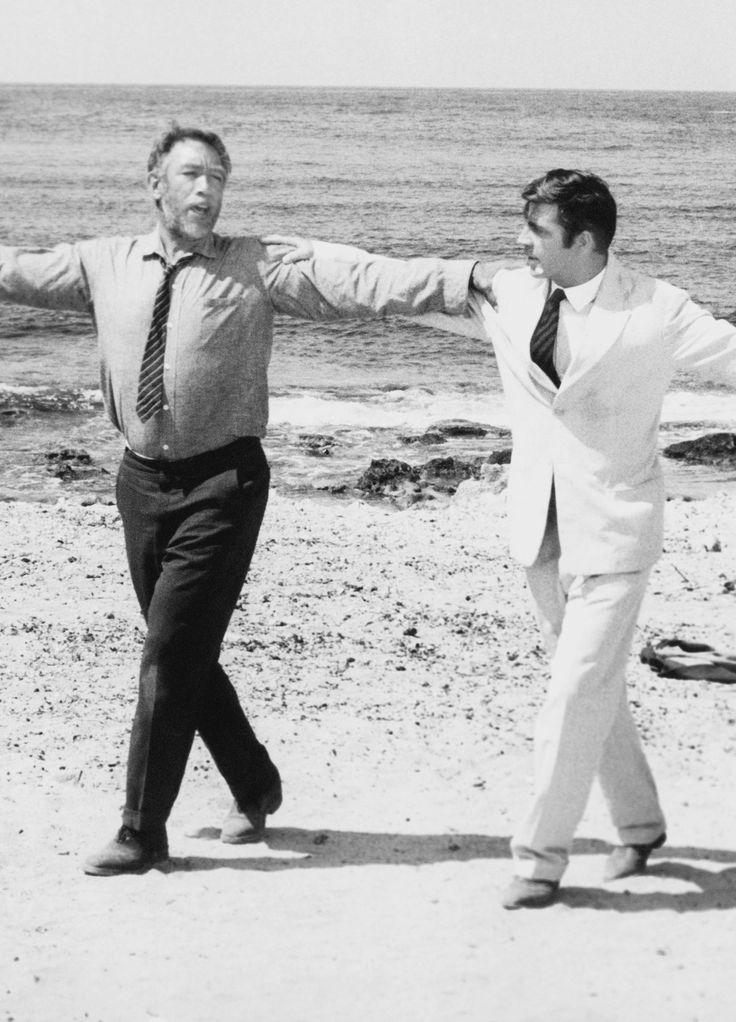 But Quinn found a painless way to move his bad leg - he dragged it across the sand. This is where this smooth and sliding step in Sirtaki came from. The name "Sirtaki" was invented by Anthony Quinn himself, and it came from the name of the dance "Syrtos" in a diminutive form. When Michael Cacoyanis asked him what kind of dance it was. Quinn sneered that it was the folk Greek dance "Sirtaki", which he was taught by a Greek. In his answer, Quinn seemed to justify himself that he had danced a dance, which, after all, was very different from what he would like to dance and what he had learned from the locals. But a little time passed before the film "Zorba the Greek" really fell in love with the Greeks, and the "Zorba Dance" touched the Greeks so much that it instantly became the most popular Greek dance and very soon was recognized at the legislative level as a national Greek dance. All over the world, the Zorba Dance became known as the Sirtaki dance, and the dance itself became one of the main symbols of Greece.
But Quinn found a painless way to move his bad leg - he dragged it across the sand. This is where this smooth and sliding step in Sirtaki came from. The name "Sirtaki" was invented by Anthony Quinn himself, and it came from the name of the dance "Syrtos" in a diminutive form. When Michael Cacoyanis asked him what kind of dance it was. Quinn sneered that it was the folk Greek dance "Sirtaki", which he was taught by a Greek. In his answer, Quinn seemed to justify himself that he had danced a dance, which, after all, was very different from what he would like to dance and what he had learned from the locals. But a little time passed before the film "Zorba the Greek" really fell in love with the Greeks, and the "Zorba Dance" touched the Greeks so much that it instantly became the most popular Greek dance and very soon was recognized at the legislative level as a national Greek dance. All over the world, the Zorba Dance became known as the Sirtaki dance, and the dance itself became one of the main symbols of Greece.
Reference: Anthony Quinn - full name Antonio Rudolfo Oaxaca Quinn - American actor, artist and writer of Mexican origin. Years of life 04/21/1915 - 06/03/2001. Anthony Quinn has won two Oscars for his roles in Hail Zapata and Lust for Life.
* Meta Platforms Inc. (Facebook, Instagram) - an extremist organization whose activities are prohibited on the territory of the Russian Federation
Privacy policy | Site Rules | Our friends | Site map | ✉ Contacts
Terms and conditions for copying site materials: More...
© www.tocrete.com, . All rights reserved.
This site is hosted by Timeweb
18+Sirtaki Greek dance
Origin of the Sirtaki danceA symbol of Greece and Greek culture. Sirtaki is loved not only by the indigenous inhabitants of the islands, this dance was also appreciated by tourists. This tune is not to be confused with any other.
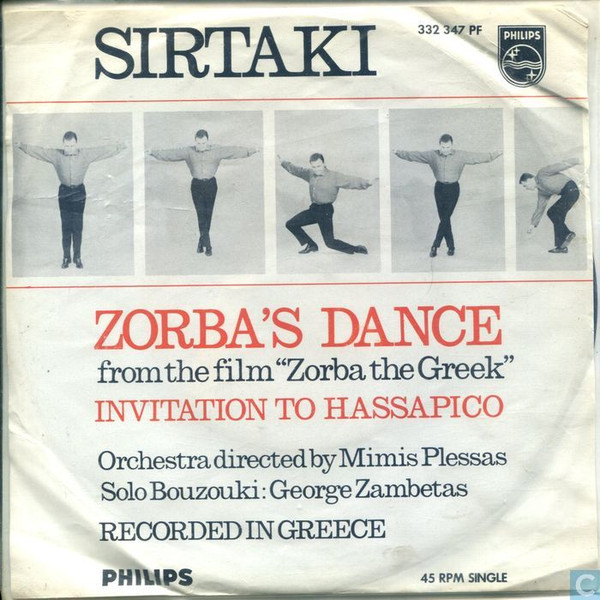 Her motif is recognizable far beyond the borders of Greece. The authorship belongs to the Greek composer Mikis Theodorakis.
Her motif is recognizable far beyond the borders of Greece. The authorship belongs to the Greek composer Mikis Theodorakis. The most famous melody does not leave anyone indifferent. The dancers claim that each movement of the fascinating choreographic masterpiece
takes them to another reality. The surrounding people no longer confuse the actors, they bring their every movement to automatism, it is impossible to stop.
Origins and origins SirtakiThe well-known dance did not originate at all during the life of the ancient Greeks. It was created in the 60s of the last century. It has become a true national tradition thanks to the movie Zorba the Greek directed by Michalis Kakoyannis. The dance is based on the idea of a slow beginning, a gradual unfolding of events and a swift finale. Such a principle, according to the mayor of Athens, who was in office at 1960s, there is a national trait of the Greeks.
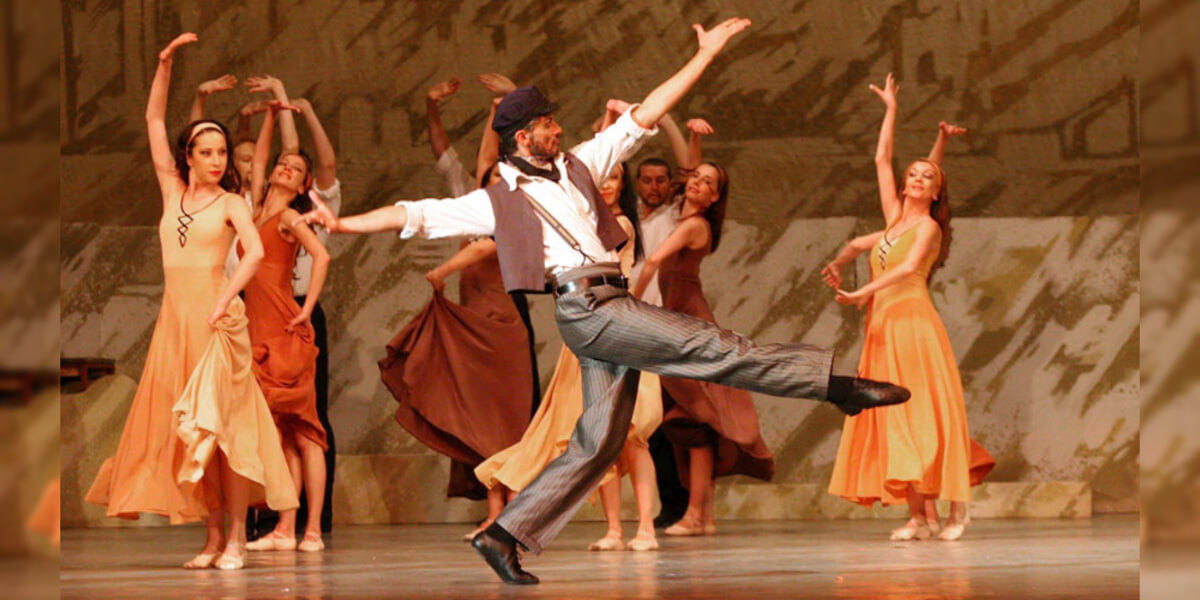
Sirtaki is considered to be an old butcher's dance. Allegedly, it was with them that the director of the film "Zorba the Greek" spied on the main movements. But according to another version, the actor who was appointed to the main role, Anthony Quinn (Alexis Zorba), broke his leg right before the start of filming. To find a way out, a kind of dance was invented for him. His sliding movements began at a slow pace, but with the development of the motive, they rhythmically accelerated. This decision was presented to the director by composer Mikis Theodorakis, and Quinn came up with the name - Sirtaki, which was recognized and widely used.
The Greek folk choreographic genre “syrtos” developed in Crete. It is believed that Quinn drew an analogy with him when he applied movements in his work as Zorb. He claimed that a local Greek taught him such body movements, and they forever crashed into the memory of the actor with their liveliness, beauty and originality.
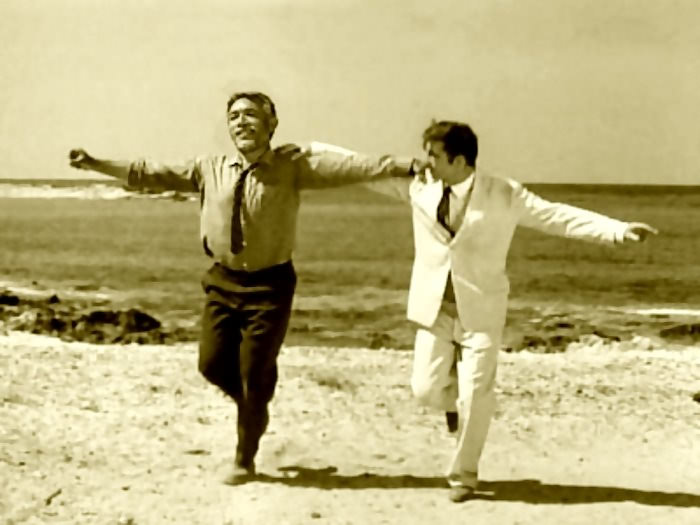
Based on the story based on the book of the same name by Nikos Kazantzakis, Zorba taught Basil, a famous Greek dance, to a guest from distant England. Who would have thought that this particular motive and movement would become the national priority of the country, its calling card and a way to attract tourists from around the world.
According to another version, it is believed that the basis of sirtaki is not only sirtos, but also the original dance khasaposerviko. His movements are sharper than in sirtos, and more like jumps. It is known that the director invited a fairly well-known dancer to work with Quinn, but the actor could not learn the basic movements from the teacher, and could only perform the slow part of the sirtaki. This is also explained by the physical condition of the artist, namely, a broken leg. Quinn's understudy performs fast movements in the film. Some close-ups are Quinn's slow movements, but long shots are taken with a stunt double.

The hymn to the Greek soul, however, was going to be changed already at the stage of editing the film. But at the last moment they changed their minds. “There is nothing more accurate that would convey the foundations of Greek culture and the character of this people,” Kakoyannis wrote. A simple melody became the main thread of not only a brilliantly filmed movie, but also the main idea, the Greek essence.
Many historians and Greek scholars interpret the concept of "sirte" as touching a flat surface with their feet. Acceleration in the process of performing the dance speaks of the mastery of the choreographer. By the way, the performer of the role of Zorba, the American Queen, was awarded the title of "Honorary Citizen of Greece".
The essence of the sirtaki danceWell-honed steps are performed in national Greek costumes. Such a decision is often typical for demonstrating national traditions to tourists.
 In everyday life, the Greeks, in order to show simple combinations of movements at festivities and celebrations, do not dress in national clothes. Their attire is quite simple.
In everyday life, the Greeks, in order to show simple combinations of movements at festivities and celebrations, do not dress in national clothes. Their attire is quite simple. In contemporary Greece every dance movement can no longer be traced back to its origins. In just half a century, so many variations have appeared that they cannot be counted. But the essence remains intact:
-
Slow start.
-
Gradual acceleration of the tempo.
-
Rapid finale.
To this day, this choreographic ensemble is called "Zorba's Dance". The Greeks love their hero and are happy to demonstrate their favorite movements. It is impossible to dance alone. This is a collective decision. An ideal combination when 10-15 people dance sirtaki. At first, they line up, showing smooth movements with their legs, but they can also merge into a circle. This is not forbidden.
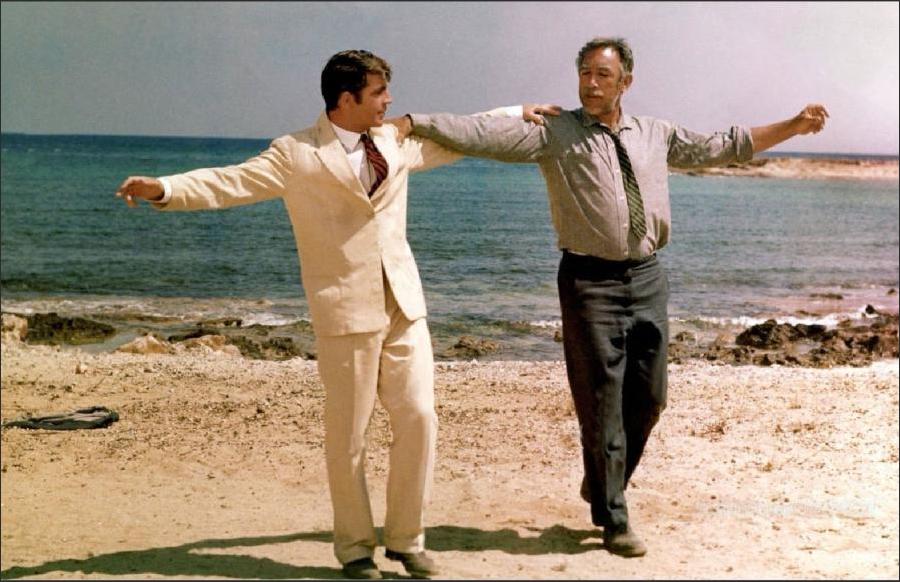 When even more people show characteristic movements, they line up in several lines, then forming a couple of circles.
When even more people show characteristic movements, they line up in several lines, then forming a couple of circles. Mandatory ritual - put your hands on the neighbor's shoulders during the dance, and touch his torso with him. Legs with a fellow never intersect. Don't untie your hands. This contradicts the main idea of sirtaki. The ideal option is considered to be a dance, when the dancers' legs rise and glide smoothly, synchronously, not lagging behind the music even a beat.
Smooth movements are in trinity:
-
Pitch.
-
Half squat.
-
Lunge.
The crossed zigzag movement, especially when the dancers move in a circle, makes a lasting impression on the audience. The music is in four quarters. But during the period of increasing tempo, it turns into 2/4. In this rhythm, it is easier to jump and move faster.
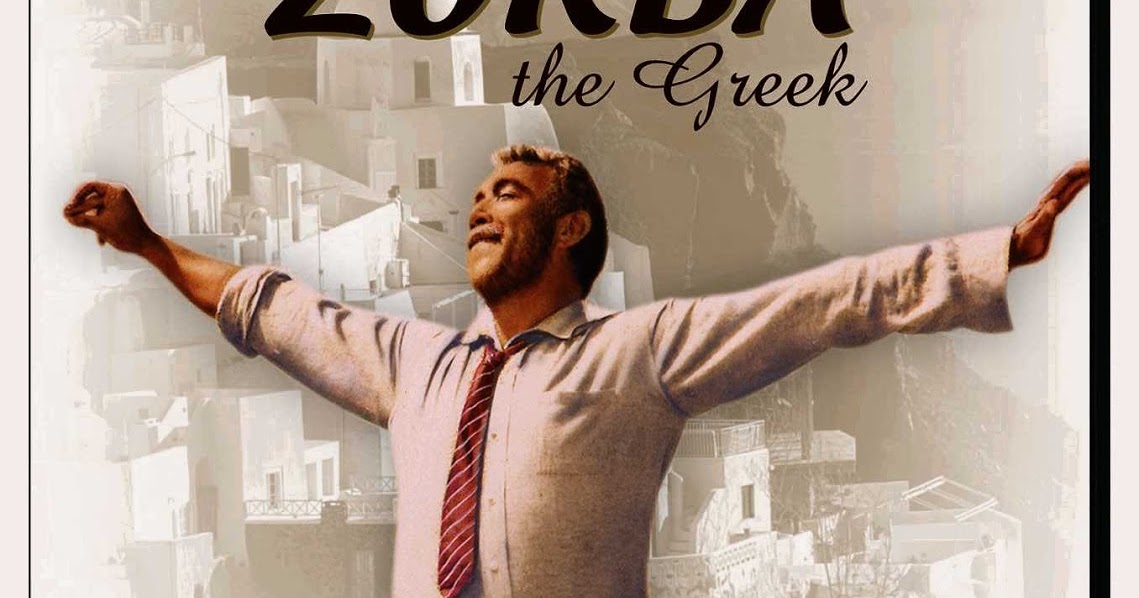
Folk masterpieces
In the summer of 2012 in Volos, as a result of a planned action, more than 5,500 Greeks, aged 13 to 90, lined up in a kind of sirtaki round dance. It was another record for the Guinness book under the light of the moon, which became the only one in the world in terms of scale and number of participants. The choreographic steps lasted exactly 5 minutes, and the dancers were the inhabitants of Volos, Athens, Thessaloniki, Larissa, Trikala, and the islanders. The Greek synchronized swimming team also joined.
Greeks never change their national traditions. Each festival or celebration is accompanied by collective pas. For tourists, this is another page in Greek culture. It is so original that there are no analogues in the world. The melody itself has won fans all over the world. Now, when people hear the incendiary motif of sirtaki, associations arise only with Greece.

Almost all the scenes of Zorba the Greek were filmed in Crete. The famous island has always been very popular with tourists. It is the largest island in the Greek Republic. Almost every tourist who arrives in Crete tends to come to the city of Rethymnon. It is located in the northern part of Crete and, in truth, is considered the most beautiful of the cities. The port was built by the Italians.
From legend to legend
Crete is full of legends. It is believed that Zeus, the lord of the gods, was born on this island. That is why Dikti cave is popular among tourists. In it, taking the form of an ox, Zeus hid the stolen Europe from prying eyes. And Ariadne has been here. Her glomerulus paved the way for Theseus from the intricate passages of the labyrinth, where the well-known Minotaur lived.
What about sirtaki? What else is connected with him here, except for the film being shot? Friendly Greeks will never deny the cultural traditions of other peoples, but they also cherish their own no less than representatives of other nationalities.
 A distinctive feature of the Greeks is the daily adherence to folk customs. They used to greet each other noisily and talk loudly in the street. In this they are somewhat similar to the Italians.
A distinctive feature of the Greeks is the daily adherence to folk customs. They used to greet each other noisily and talk loudly in the street. In this they are somewhat similar to the Italians. But at the same time, the inhabitants of Crete and Greece, in general, are quite calm and absolutely naive. Their measured life is so reminiscent of the same sirtaki. Slow, smooth movements, waddle, slowly. But when you need to hurry up or show respect to a neighbor, here they resemble a fly during the flight.
These people speak quietly in everyday life, but sometimes everything around them turns pale from the noise of their voices. They are full of emotions, gesticulating. This pace smoothly replaces their philosophical, contemplative attitude to life.
At about 2 pm the Greeks start their traditional rest. Siesta lasts 3-4 hours. During this period, they eat and sleep, and then they no longer go to work. In the evening they gather in taverns, where they listen to pleasant music, drink soft or even strong drinks and, in a fit of emotions, dance.
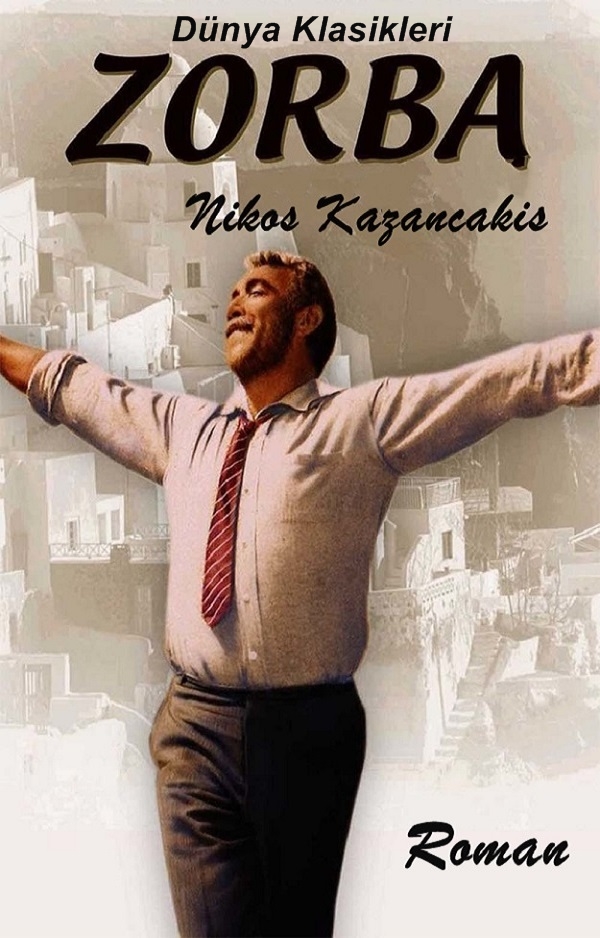 What would you think? Of course sirtaki. Collective choreographic steps cannot be stopped.
What would you think? Of course sirtaki. Collective choreographic steps cannot be stopped. Crete's most interesting sights
are just a few steps or kilometers away from the hotels. Transport goes well. There are fishing villages here, visiting which no tourist will be dissatisfied. Almost every city has churches, fortresses, museums and even mosques. In the evening, when young people fill the taverns, it becomes quite fun, and everyone dances the incendiary sirtaki. Sirtaki and bouzouki
The bouzouki is a Greek folk stringed and plucked instrument. It is very similar to the lute. Bouzouki is much older than the modern sirtaki dance. The roots of the instrument are in distant ancient Greece. It comes from cithara. Most of all, the bouzouki is widespread in Cyprus, although it is popular throughout Greece.
Used to be played on three-string double or even triple bouzouki.
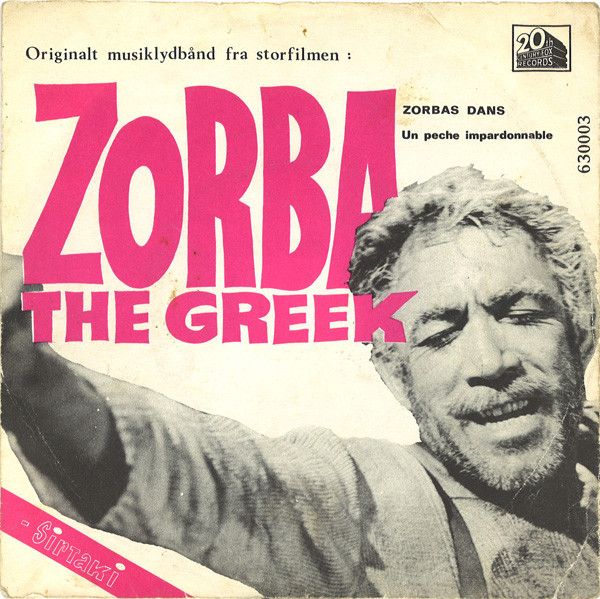 But now the instrument is more often four-stringed (each of the strings is double). It was revived just at the time of the appearance of sirtaki, in the 60s of the last century. For a long time, the bouzouki was not recognized, but only in combination with the well-known dance did it gain new popularity. Now sirtaki is already impossible to imagine without the accompaniment of colorful, rich tones of string-plucked
But now the instrument is more often four-stringed (each of the strings is double). It was revived just at the time of the appearance of sirtaki, in the 60s of the last century. For a long time, the bouzouki was not recognized, but only in combination with the well-known dance did it gain new popularity. Now sirtaki is already impossible to imagine without the accompaniment of colorful, rich tones of string-plucked about tool. Greek cultural traditions do not end there. The perfect combination of sirtaki and bouzouki is only gaining momentum. Representatives of this nationality are very revered fun. Even in times of crisis, the Greeks came up with a saying: "Poverty loves to have fun." They don't drink much alcohol. The performance of sirtaki is considered an excellent doping. He is the main component of the cocktail of fun.
Bouzouki and other colorful national landmarks
The sights of Greece can be easily seen everywhere. The fun unfolds closer to the night.  Going into any of the bars, where it is advisable to book places in advance, tourists can enjoy melodies performed on bouzouki. There are night centers and taverns.
Going into any of the bars, where it is advisable to book places in advance, tourists can enjoy melodies performed on bouzouki. There are night centers and taverns. Tourists will hear not only national motives. You will get acquainted with Italian and Turkish songs and dances. Programs in bars and entertainment centers are different. Sounds modern and folk music. In the summer of 2015, Greece celebrated 90th anniversary of their national hero, composer Mikis Theodorakis. Recall that the well-known melody of sirtaki belongs to him. Among other things, symphonies performed by orchestras, ballets, arrangements of folk motifs, chamber works were also remembered.
In the bars and taverns of Greece, you can also see excursions, including quite young people. Of course, they explore all the sights of
accompanied by a guide and their school teachers. Tourists do not drink alcohol, they come to see the dancing sirtaki and are not averse to participating in it themselves. 


